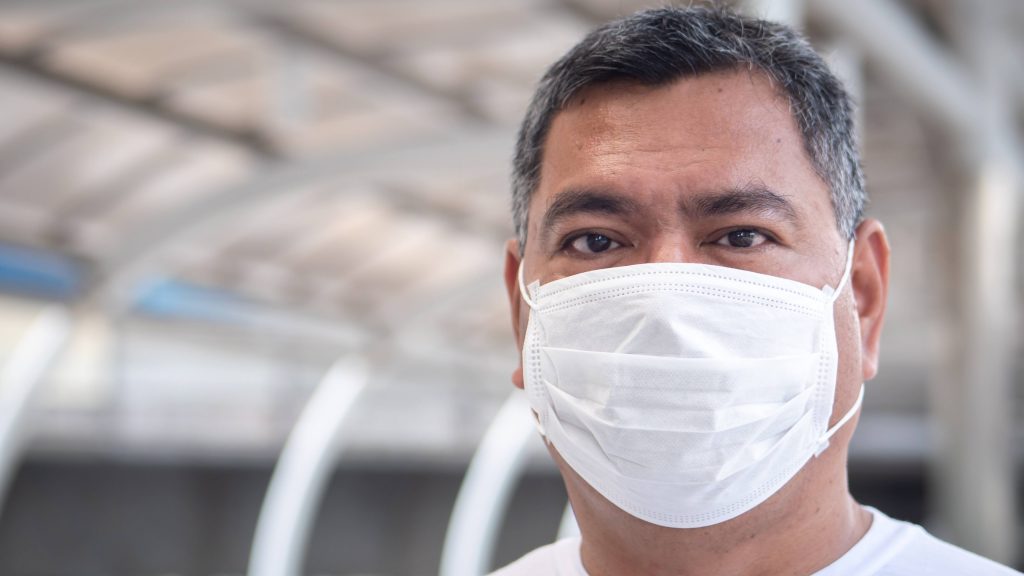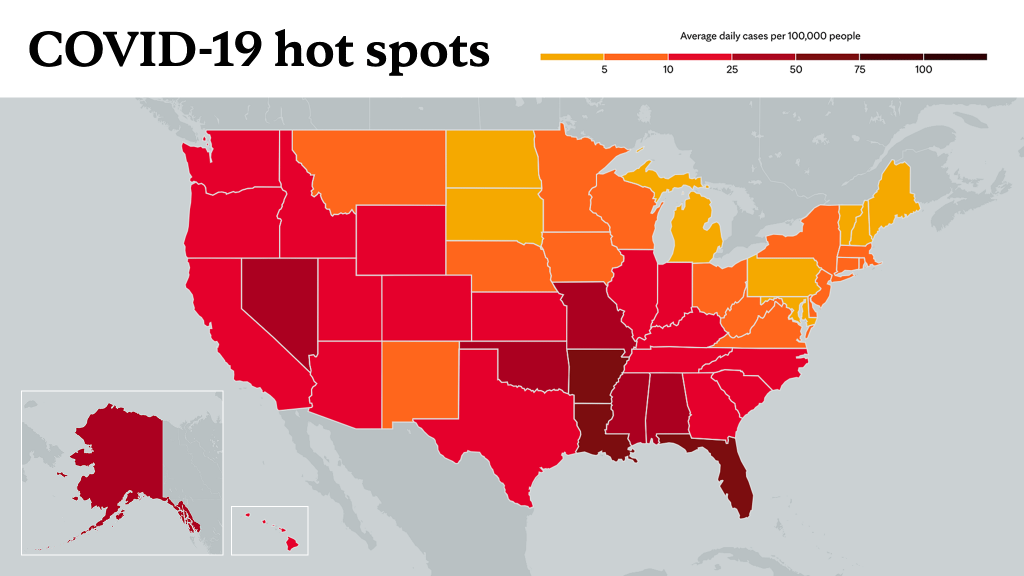
The Centers for Disease Control and Prevention (CDC) recently changed course on masking guidelines, recommending people vaccinated for COVID-19 resume wearing masks in public indoor spaces in areas of the U.S. where there is high transmission of the virus.
Watch: Mayo Clinic expert explains why masking recommendations for COVID-19 are changing.
Journalists: Broadcast-quality sound bites are in the downloads at the bottom of the page. Please courtesy: "John O'Horo, M.D./Infectious Diseases/Mayo Clinic."
The Mayo Clinic New Network team sat down with Dr. John O'Horo, a Mayo Clinic infectious diseases specialist. In this Q&A, he explains why masking changes are necessary to protect people from COVID-19:
Why are masking recommendations changing once again?
The reason that the masking recommendations are changing is that the situation itself has changed. It has changed partly because vaccination rates didn't reach the level that we had hoped for to avoid having a second surge and partly because the delta variant is just that much more transmissible. We're seeing a lot more transmission because of that variant.
Has the science changed?
The underlying scientific method that's been used has been constant throughout the pandemic. This has always been about reacting to data as we understand it, and seeing what's happening and coming up with the best recommendations at the time. The situation itself has changed. We've seen increased transmission. We've seen new variants come along.
It's a lot like when you see a weather watch or warning on the TV. As the situation changes, the meteorologists upgrade you from a watch to a warning and say it's gone from time to watch the skies to time to go in the basement or time to get out of town. This is no different from that.
What new information has emerged in recent weeks that's leading to changes in masking recommendations?
What's emerged in the past few weeks is some evidence that those who are vaccinated still have the potential to transmit COVID-19, even if they aren't demonstrating symptoms themselves. Because of that, in areas of high transmission, the CDC is recommending that people wear masks, even if they are vaccinated to help try to slow this delta variant surge and give a chance to those who aren't vaccinated to get vaccinated, and avoid getting hospitalized or seriously ill with COVID-19.
____________________________________________
For the safety of its patients, staff and visitors, Mayo Clinic has strict masking policies in place. Anyone shown without a mask was either recorded prior to COVID-19 or recorded in a nonpatient care area where social distancing and other safety protocols were followed.
Information in this post was accurate at the time of its posting. Due to the fluid nature of the COVID-19 pandemic, scientific understanding, along with guidelines and recommendations, may have changed since the original publication date.
For more information and all your COVID-19 coverage, go to the Mayo Clinic News Network and mayoclinic.org.
Learn more about tracking COVID-19 and COVID-19 trends.








